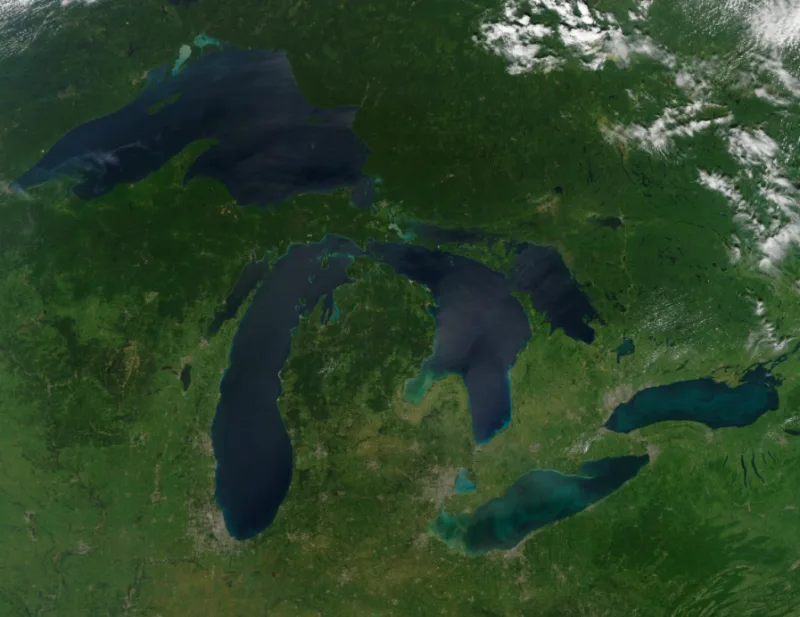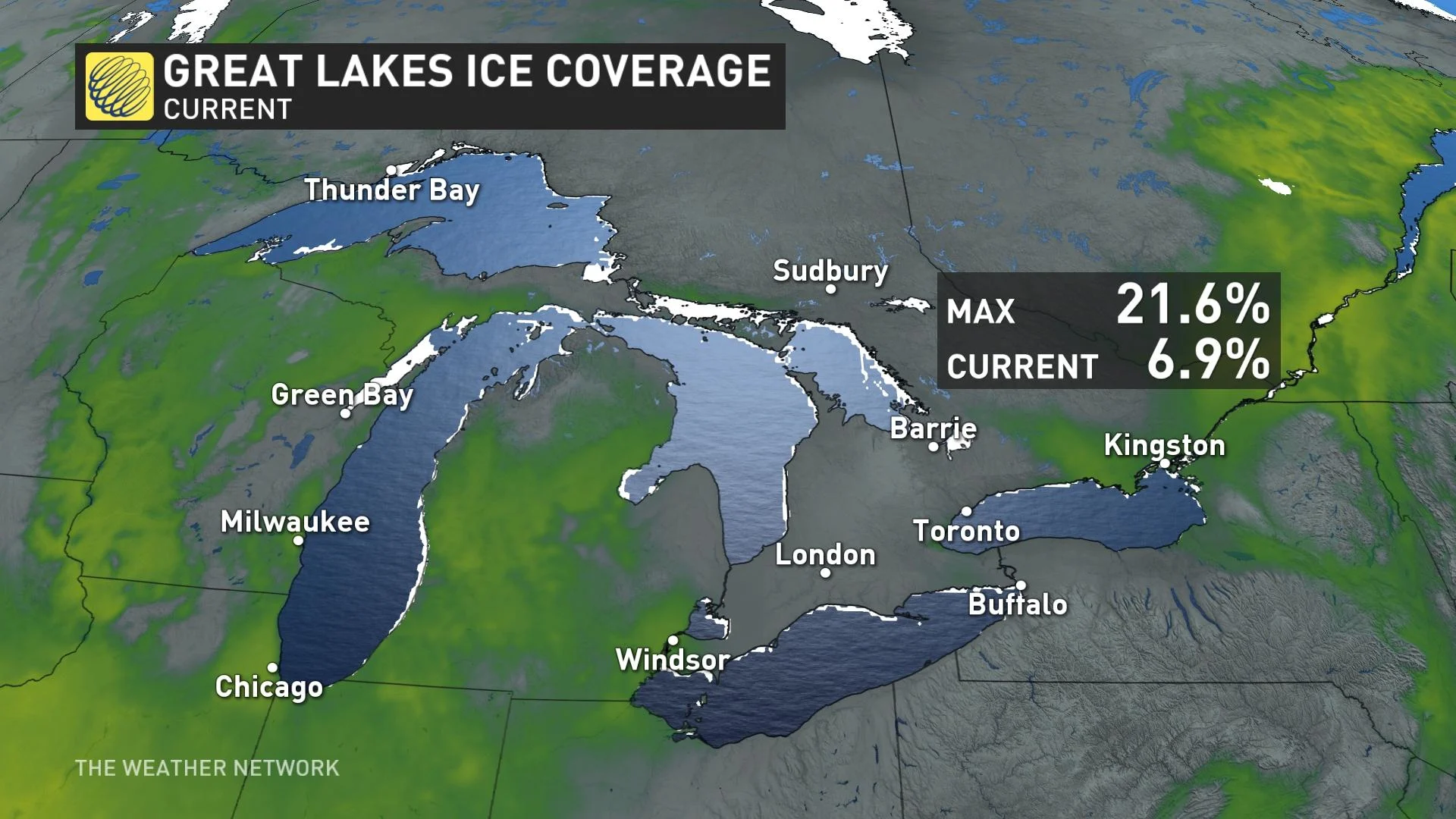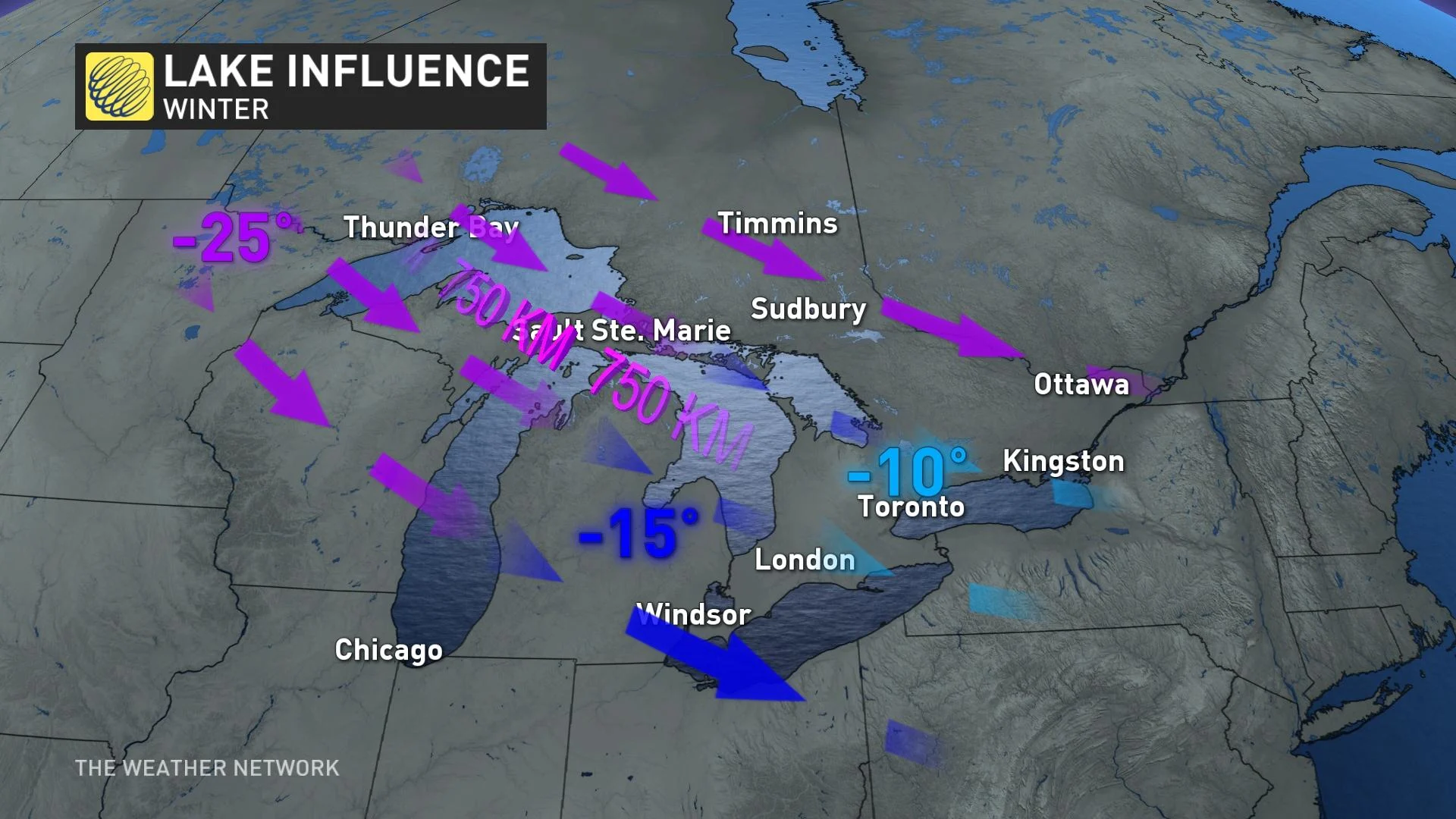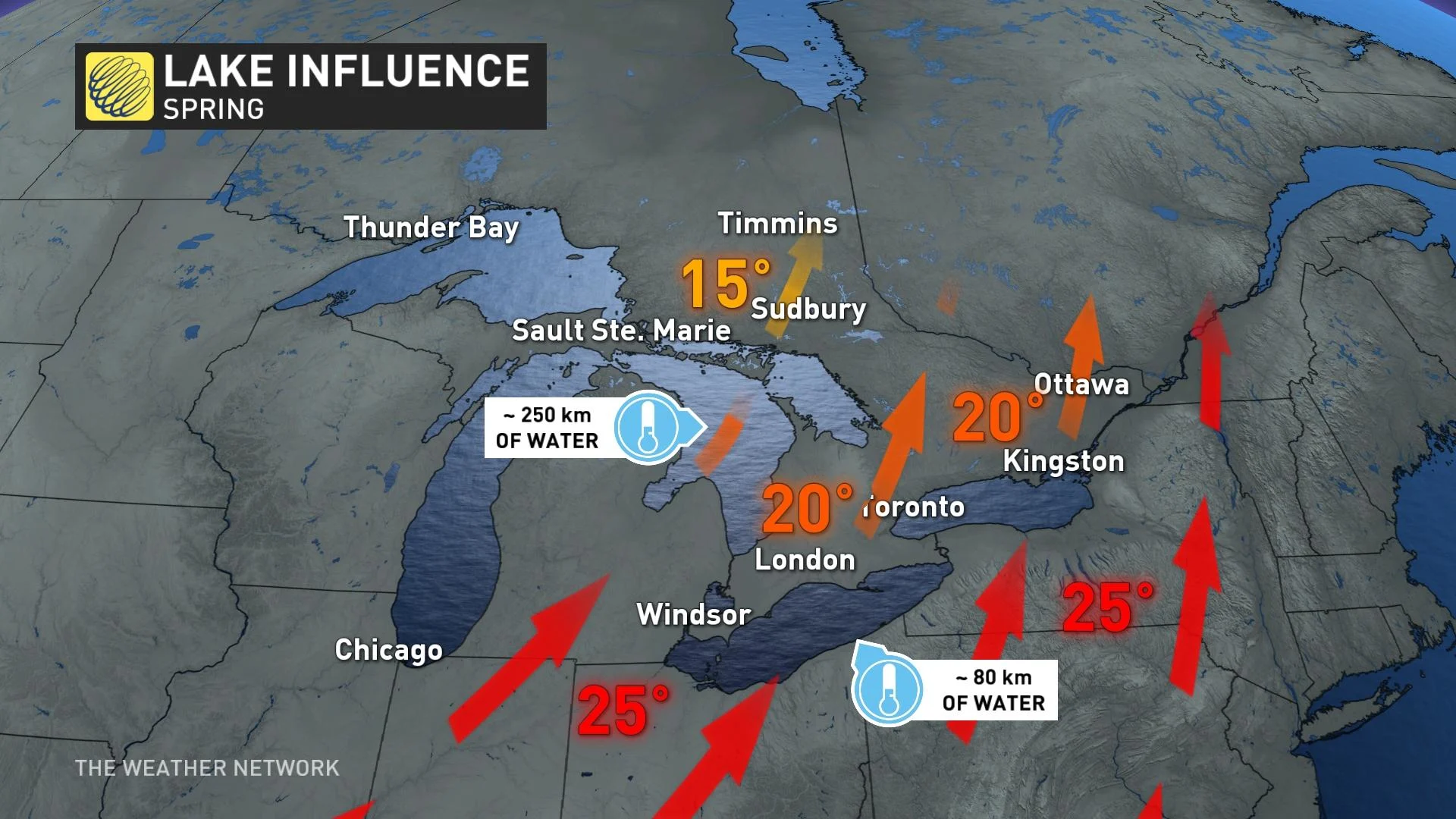
What does a lack of ice on the Great Lakes mean for spring weather?
An incredible lack of ice on the Great Lakes this winter has raised questions regarding the possible upsides for the months ahead
After only two strong cold snaps over the Great Lakes this winter, both of which were followed by a warmup, there isn’t much ice to melt this season.
The ice coverage peaked at 21.6 per cent, a far cry from the average of 53 per cent.
DON'T MISS: Ontario just lived through its darkest winter in 73 years

Winter brings a love-hate relationship with the lakes in southern Ontario, enjoying how the open water moderates the dense Arctic air as it crosses the 750-kilometre stretch of lakes Superior and Huron, warming by 10°C to 15°C.
The price to pay is the dangerous snow squalls that developed in the process.
However, spring warmth comes from the south and southwest, meaning it only has one-tenth of that distance to cross over Lake Erie.

SEE ALSO: Why the Great Lakes produce some of the world’s heaviest snow
In addition to the shortened journey, the warming land surface will allow the heating to mix with air above the ground, further minimizing the impact of the lake.
In the short term, the open water could mean an earlier arrival of those chilly lake breezes while the impacts of the low ice coverage will diminish into May as the impacts of solar heating become a bigger influence.

If the milder trend of water temperatures continues through May, it could mean stronger storms venturing in from Michigan.











